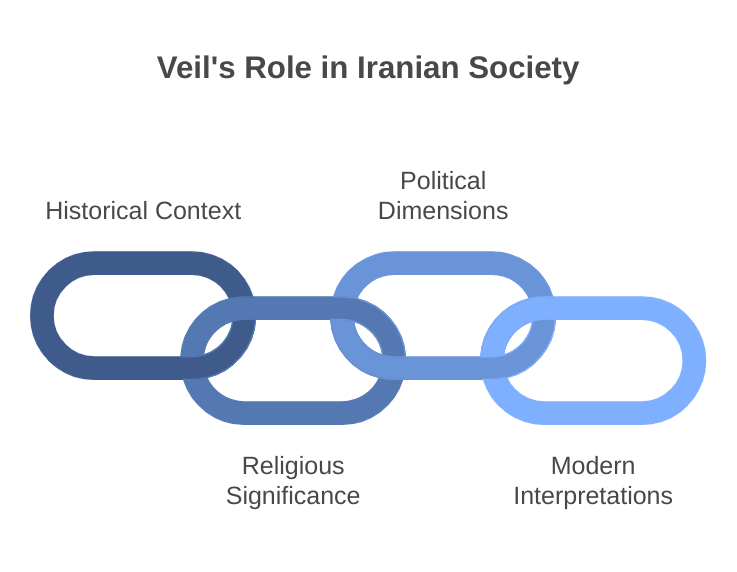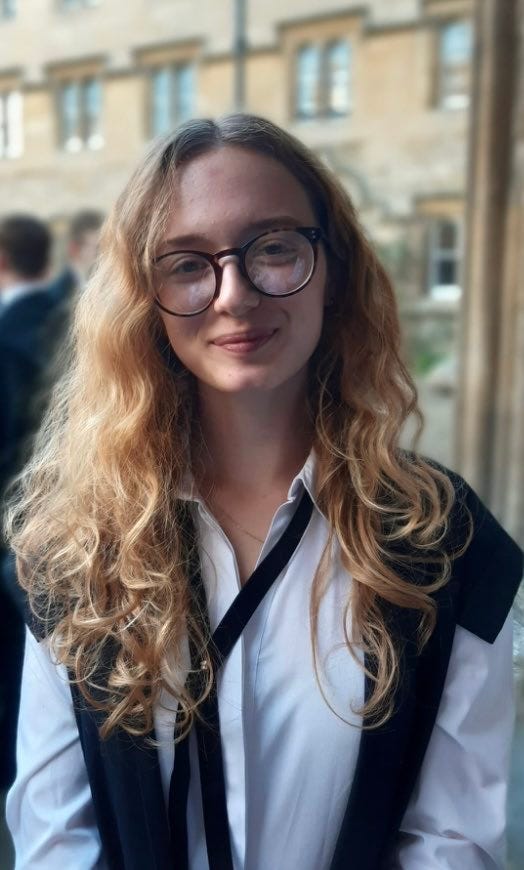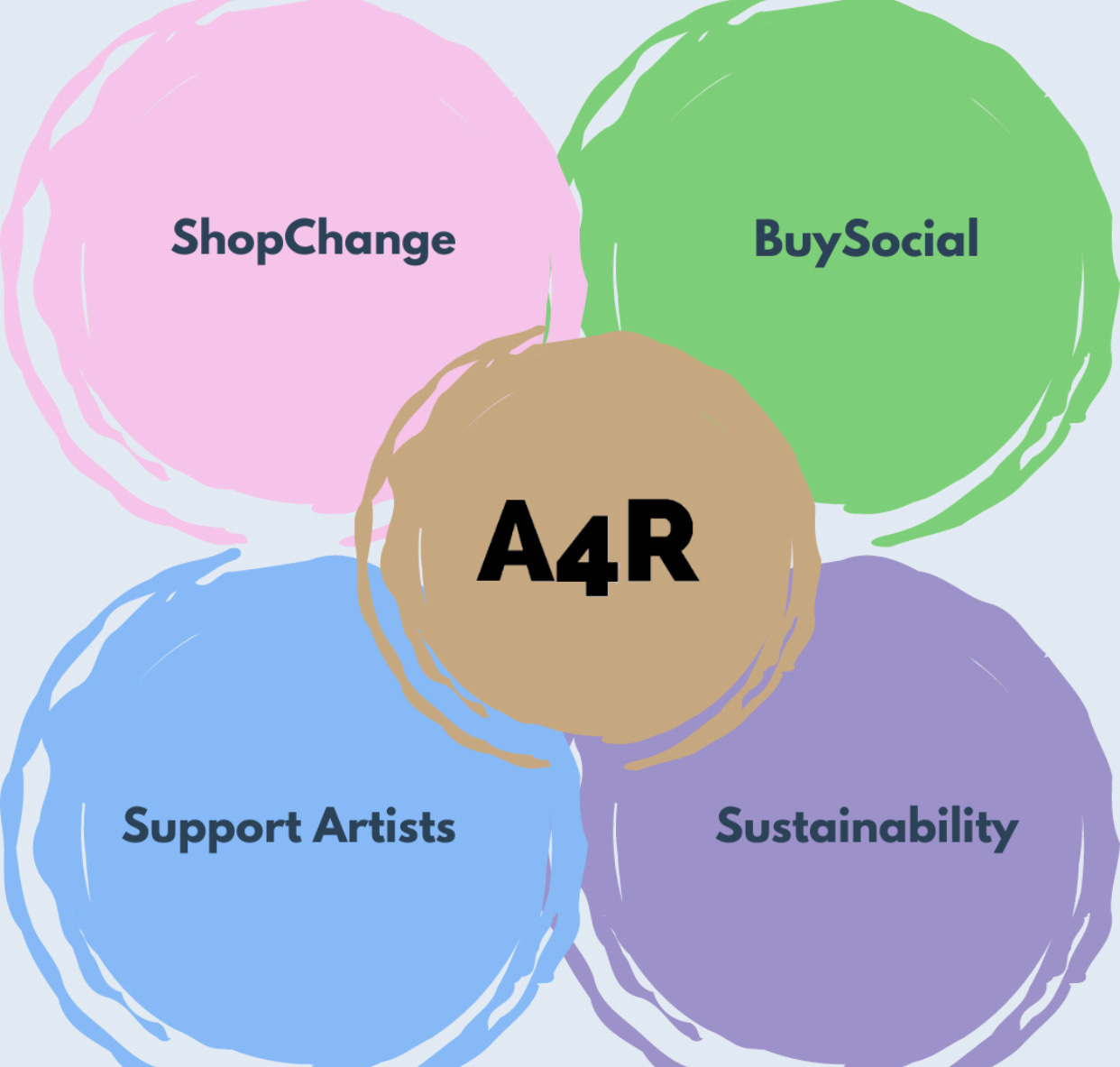Multivalent Veils in Post-Conflict Iran
The Islamic Revolution of 1979 and Khomeini’s establishment as Supreme Leader in 1980 led to Iran’s transition from democracy to theocracy. A key motif within Iran's media is the veil, or hijab. The veil's portrayal in the Global North is linked to politics: terror attacks in New York, London and Paris, Shamima Begum’s asylum appeal, and Mahsa Amini’s death at the hands of the Gasht-e-Ershad (morality police). Western media sees the veil as a threat to feminism and oppression. But for women in post-conflict Iran, the government has exploited the veil to deny their autonomy.
History of the veil
The veil, now associated with Islam, had a secular origin. In the Persian Empire, the pre-Islamic veil was a status symbol for upper-class and royal women who led secluded lives. They wore veils in public to prevent commoners from seeing their faces. At that time, the veil was a symbol to be envied. Early Muslims adopted the practice of veiling, influenced by the cultures they conquered, and the veil took on religious significance (Zahedi: 252).
Under Reza Shah Pahlavi, the veil was seen as a barrier to modernity, so he enforced unveiling, ordering theatre, restaurant, and hotel owners to deny entry to veiled women (Zahedi: 255). Contrary to post-conflict associations of enforced veiling and girls being barred from education, Reza Shah Pahlavi forbade teachers from wearing the veil, causing many parents to stop sending their daughters to school. Enforced unveiling ended in 1941 when Reza Shah Pahlavi was forced out of power by the Allied powers accusing him of favoring Nazi Germany.
Attaching religious significance to the veil: Hijab in the Qur’an
Oli Mohammadi has traced the origins of hijab from references in the Qur’an. English approximations of hijab translate hijab as ‘veil’ but it is a more “exhaustive and complicated Arabic word” (Mohammadi: 2), appearing in five verses of the Qur’an (Qur’an 7:46; Qur’an 19:16-17; Qur’an 33:53; Qur’an 41:5; Qur’an 42:51). Direct translations include barrier, seclusion, curtain or divider.
Different Islamic sects have individual interpretations of the Qur’an, the spirit of hijab endorses modesty. Mohammadi notes that the verses where hijab appears do not address the clothing of Muslim women (Mohammadi: 2). Salient examples of women’s clothing in the Qur’an are ‘khimar’ (Qur’an 24:31), referring to headscarves, and ‘jilbab’ (Qur’an 33:59), referring to outer garments and clothing. When the passages mentioning hijab and those discussing women’s clothing are taken together, veiling is enacted as a practice of the faith. Mohammadi concludes that “the Islamic practice of covering derives its power from the fusion of the Qur’an’s call to being decent and modest read alongside the verses mentioning khimar and jilbab” (Mohammadi: 2).
Modern motivations: Economic and political aspects of hijab
The symbolism of veiling gained new meaning during the Iran-Iraq war when women noticed the correlation between heavy Iranian casualties and losses of territory and the increase in brutality of the komiteh in enforcing veiling. “These crackdowns seemed to be a cynical use of women and their attire to divert attention inward and away from the horrors of the front” (Shirazi-Mahajan: 61). The veil was exploited to control the national psyche.
From 1997-2005, during President Mohammadi Khatami's rule, Iran saw a rise in cosmetic consumption, stylised Islamic clothing like colorful and patterned rusari, plastic surgery, and nose jobs as hijab enforcement relaxed. However, under President Mahmoud Ahmadinejad, there was increased pressure on women to wear dark ‘rusari’ covering their hair entirely. Merchants drove this change by importing cheaper black chadri fabric from Korea and Japan.
Fear enforced hijab and influenced outsider perspectives. Violating the modesty code in Iran can result in 74 lashes or two years’ imprisonment. Stories of women being sprayed with acid or stuck in bags of cockroaches for showing a strand of hair circulated after the revolution (Mohammadi: 8). “Zealous Zaynab commando units wiped off women’s lipstick with a razor blade hidden in a handkerchief” (Shirazi: 112). Mohammadi records a woman’s account of having her shoes confiscated by the komiteh because her bangs showed from under her ‘rusari’ and how she had to run home barefoot - taboo in Iran.
Autonomy and veiling
In 2020, Yaghoob Foroutan conducted a demographic study that found the median age of Iranian citizens is 30 (Foroutan: 739), compared to 40.7 for British citizens is 40.7 (Statista). Foroutan asked 4267 people over 15, in rural and urban areas of Iran about their attitude towards veiling. The results show that about two-thirds believe that women should decide whether to wear hijab (Foroutan: 741). More than half of the oldest cohort (aged 55 and over) disagree with women choosing, whereas three-quarters of the youngest cohort (aged 15–24) agree (Foroutan: 742). Foroutan’s research suggests that hijab enforcement conflicts with the beliefs of the majority of Iran’s citizens and Iranian women (approximately 74% of those asked). Compliance as defiance.
Mohammadi’s conversations with Iranian women about the hijab detail how they defy the regime as compliance. Maryam told Mohammadi that by wearing a black chador and covering her hair with her rusari, she undermines Gasht-e-Ershad and the government. By not giving them a reason to punish her, Maryam sees herself as stripping the government of power. “For Maryam, power is not the ability to inflict punishment; power is the actual inflicting of punishment. By abiding by the rules and regulations, she thwarts the policemen’s capacity for fulfillment” (Mohammadi: 15). The symbolism of the veil becomes more complex viewed through this lens; a covering the government makes mandatory, to prove women’s modesty and ‘protect’ them from abuse, enforced through abuse, actually protects Maryam because by wearing it she evades the authorities' violence.
For Mitra, wearing a dark veil is a method of protection against the government’s attempts to divert attention from other aspects. Mitra tells Mohammadi “maybe for some people the colorful hijab is a political statement but if you ask insiders mostly everyone is bored”, “hijab is the symptom of larger problems. Instead of concerning myself with distractions I do exactly what they say, to show the powers to be I am aware of the ridiculousness, the ludicrousness of our government” (Mohammadi: 19). Mitra’s words echo the awareness during the Iran-Iraq war that the veil was made into a political tool. After speaking to Maryam and Mitra, Mohammadi concludes that “approaching Iranian women as oppressed or fundamentalist or revolutionary—by being focused on how hijab is practiced—simply propagates the Iranian government’s political agenda to control women’s bodies” (Mohammadi: 220).
A symbol of oppression
Mahsa Amini’s death in police custody was attributed by a UN fact-finding mission to physical violence, sparking anger amongst Iranian women. They demonstrated bravery by going out without a headscarf, despite cameras set up to detect them. The Gasht-e-Ershad used “disproportionate lethal force” against protesters and committed “unlawful and extrajudicial killings” (BBC 8 March 2024). The first vote since Amini’s death saw a record low turnout of 41% to Iranian elections, though many believe it to be lower (BBC 4 March 2024). The silent majority declined to vote in protest against the government, undermining its legitimacy and influence. Similarly to Maryam and Mitra, defiance masquerades as silence and compliance.
In post-conflict Iran, the hijab is used to control women’s autonomy. Iranian women navigate the regime aware of the veiling history and government’s manipulation.
In this episode Issy discusses the issues of the Veil in the post conflict country of Iran. She is a student journalist with us on a placement organised by the Oxford University Career Services. This article was edited using Lex.page. Image with Napkin.Ai
Thank you for reading an A4R 🎨 Post. Don’t forget to visit our gift shop here. Every purchase scales our impact and pays our bills.














